 Search by Keyword
Sign Up Below for our MONTHLY BEATLES TRIVIA QUIZ!
|
“LOVE YOU TO”
(George Harrison)
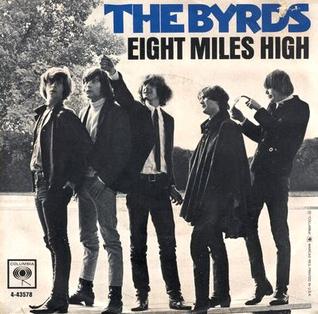 When “Norwegian Wood (This Bird Has Flown)” made its appearance in December of 1965 on the Beatles album “Rubber Soul,” it caused quite a stir. The news spread that the exotic sounding instrument performing the lead lines was an Indian instrument called a sitar. The song itself was beautifully written and brilliantly played, but the sound of the sitar was the immediate attention getter. What most viewed as a gimmick spread to many popular artists of that time so that within a few months, the radio airwaves were teeming with that incredible sounding instrument. The sitar had even been emulated on guitar by The Byrds' "Eight Miles High" and The Yardbirds' "Shapes Of Things" during the early months of 1966, as well as an actual sitar being used on Donovan's album "Sunshine Superman" during this same time period. When “Norwegian Wood (This Bird Has Flown)” made its appearance in December of 1965 on the Beatles album “Rubber Soul,” it caused quite a stir. The news spread that the exotic sounding instrument performing the lead lines was an Indian instrument called a sitar. The song itself was beautifully written and brilliantly played, but the sound of the sitar was the immediate attention getter. What most viewed as a gimmick spread to many popular artists of that time so that within a few months, the radio airwaves were teeming with that incredible sounding instrument. The sitar had even been emulated on guitar by The Byrds' "Eight Miles High" and The Yardbirds' "Shapes Of Things" during the early months of 1966, as well as an actual sitar being used on Donovan's album "Sunshine Superman" during this same time period.
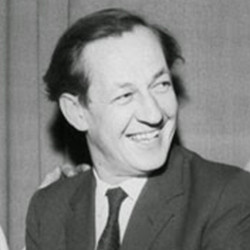 Back on May 2nd, 1966, radio broadcaster Brian Matthew interviewed The Beatles for the 400th edition of the BBC radio show Saturday Club. Appropriate attention was given to the recording of their latest album “Revolver,” which had been underway for nearly a month at that time. Back on May 2nd, 1966, radio broadcaster Brian Matthew interviewed The Beatles for the 400th edition of the BBC radio show Saturday Club. Appropriate attention was given to the recording of their latest album “Revolver,” which had been underway for nearly a month at that time.
Brian Matthew: “Can you disclose any secrets about this LP? Have you introduced any unusual musical instruments this time?”
John: “No!”
Brian: “You can’t use a sitar again because everybody’s using it.”
John: “Yes we can.”
Ringo: “Well, it’s like saying you can’t use a guitar because everyone’s using it.”
George: “Yeah, I play sitar on another track, but I don’t care if everyone’s using ‘em, you know. I just play it because I like it.”
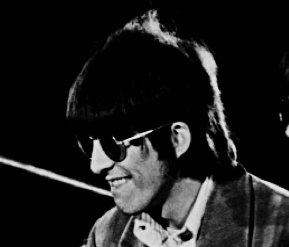 The track George Harrison referred to was the unusually titled “Love You To” which not only included the sitar but also infused the sound of more traditional Indian Classical music onto a Beatles album. This proved once and for all that the sitar was not just a gimmick but evidence of a genuine infatuation with Eastern culture as well. The track George Harrison referred to was the unusually titled “Love You To” which not only included the sitar but also infused the sound of more traditional Indian Classical music onto a Beatles album. This proved once and for all that the sitar was not just a gimmick but evidence of a genuine infatuation with Eastern culture as well.
Songwriting History
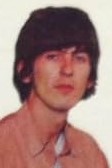 While it has been admitted that the use of the sitar on “Norwegian Wood” was a last minute decision made while recording the song in the studio, the appearance of Indian instrumentation on this new George Harrison composition was very intentional. “’Love You To’ was one of the first tunes I wrote for sitar,” George explains. “’Norwegian Wood’ was an accident as far as the sitar part was concerned…I wrote ‘Love You To’ on the sitar, because the sitar sounded so nice and my interest was getting deeper all the time. I wanted to write a tune that was specifically for the sitar.” While it has been admitted that the use of the sitar on “Norwegian Wood” was a last minute decision made while recording the song in the studio, the appearance of Indian instrumentation on this new George Harrison composition was very intentional. “’Love You To’ was one of the first tunes I wrote for sitar,” George explains. “’Norwegian Wood’ was an accident as far as the sitar part was concerned…I wrote ‘Love You To’ on the sitar, because the sitar sounded so nice and my interest was getting deeper all the time. I wanted to write a tune that was specifically for the sitar.”
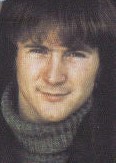 While George had tinkered with a sitar on the set of the movie "Help!" in early April of 1965, his interest in the instrument was heightened by first being introduced to that style of playing by David Crosby of The Byrds at a Benedict Canyon vacation spot The Beatles rented during their 1965 US tour. Sometime between August 23rd and 28th of that year, David Crosby and fellow bandmate Roger McGuinn, among others, were present as guests. "We were on the floor exchanging guitar licks," recalls Roger McGuinn, explaining that David Crosby showed George "some Ravi Shankar stuff that he'd just been into, because Dick Bock at World Pacific (the studio where The Byrds made early demos in 1964) had been producing Ravi Shankar." While George had tinkered with a sitar on the set of the movie "Help!" in early April of 1965, his interest in the instrument was heightened by first being introduced to that style of playing by David Crosby of The Byrds at a Benedict Canyon vacation spot The Beatles rented during their 1965 US tour. Sometime between August 23rd and 28th of that year, David Crosby and fellow bandmate Roger McGuinn, among others, were present as guests. "We were on the floor exchanging guitar licks," recalls Roger McGuinn, explaining that David Crosby showed George "some Ravi Shankar stuff that he'd just been into, because Dick Bock at World Pacific (the studio where The Byrds made early demos in 1964) had been producing Ravi Shankar."
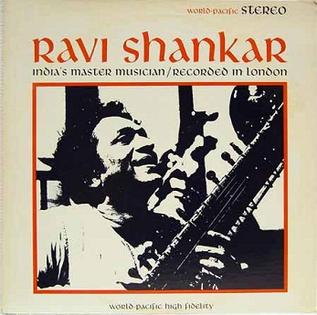 Paul explained more of the genesis of their interest in the sitar in 1966: “The Indian sounds are definitley mainly George. We started off just hearing Indian music and listening to things, and we liked the drone idea because we’d done a bit of that kind of thing in songs before. (See “Ticket To Ride” as an example.) But George got very interested in it, and went to a couple of Ravi Shankar concerts, and then he met Ravi and said, ‘I was knocked out by him! – just as a person. He’s an incredible fellow. He’s one of the greatest.’ So the two of them were having a great time!” Paul explained more of the genesis of their interest in the sitar in 1966: “The Indian sounds are definitley mainly George. We started off just hearing Indian music and listening to things, and we liked the drone idea because we’d done a bit of that kind of thing in songs before. (See “Ticket To Ride” as an example.) But George got very interested in it, and went to a couple of Ravi Shankar concerts, and then he met Ravi and said, ‘I was knocked out by him! – just as a person. He’s an incredible fellow. He’s one of the greatest.’ So the two of them were having a great time!”
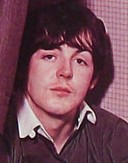 “And that’s how we brought Indian sounds on,” says Paul. “It’s nice to start bridging the two kinds of music, because we’ve just started off in a very simple way, and then this album’s got a bit better. It’s a little bit more like Indian music. It helps people to understand it too, because it’s very hard to understand. But once you get into it, it’s the greatest." “And that’s how we brought Indian sounds on,” says Paul. “It’s nice to start bridging the two kinds of music, because we’ve just started off in a very simple way, and then this album’s got a bit better. It’s a little bit more like Indian music. It helps people to understand it too, because it’s very hard to understand. But once you get into it, it’s the greatest."
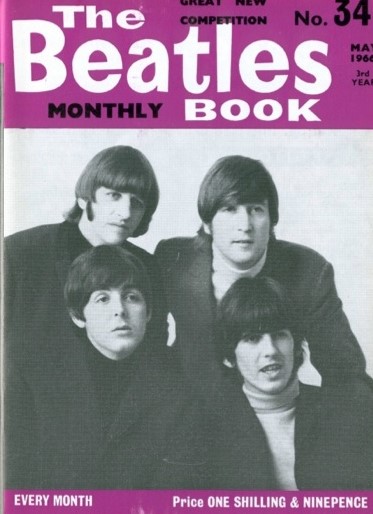 George stated in the May 1966 edition of The Beatles Book Monthly, after meeting sitar genious Ravi Shankar through his connections with the Asian Music Circle in London, exclaimed, "I've never spent so much time learning about one particular type of music...It would take years to learn it properly but I'm sure we can use some Eastern patterns in our own music" Also in 1966, he explained: "To me it is the only really great music now, and it makes Western three-or-four-beat type stuff seem somehow dead. You can get so much more out of it if you are prepared really to concentrate and listen. I hope more people will try to dig it...it hit a certain spot in me that I can't explain, but it seemed very familiar to me. The only way I could describe it was: my intellect didn't know what was going on and yet this other part of me identified with it. It just called on me." George stated in the May 1966 edition of The Beatles Book Monthly, after meeting sitar genious Ravi Shankar through his connections with the Asian Music Circle in London, exclaimed, "I've never spent so much time learning about one particular type of music...It would take years to learn it properly but I'm sure we can use some Eastern patterns in our own music" Also in 1966, he explained: "To me it is the only really great music now, and it makes Western three-or-four-beat type stuff seem somehow dead. You can get so much more out of it if you are prepared really to concentrate and listen. I hope more people will try to dig it...it hit a certain spot in me that I can't explain, but it seemed very familiar to me. The only way I could describe it was: my intellect didn't know what was going on and yet this other part of me identified with it. It just called on me."
 Although John didn’t contribute to the song at all in the studio, he also was vocal about his admiration for these sounds. “It’s amazing, this – so cool. Don’t the Indians appear cool to you? This music is thousands of years old; it makes me laugh, the British going over there and telling them what to do. Quite amazing.” Although John didn’t contribute to the song at all in the studio, he also was vocal about his admiration for these sounds. “It’s amazing, this – so cool. Don’t the Indians appear cool to you? This music is thousands of years old; it makes me laugh, the British going over there and telling them what to do. Quite amazing.”
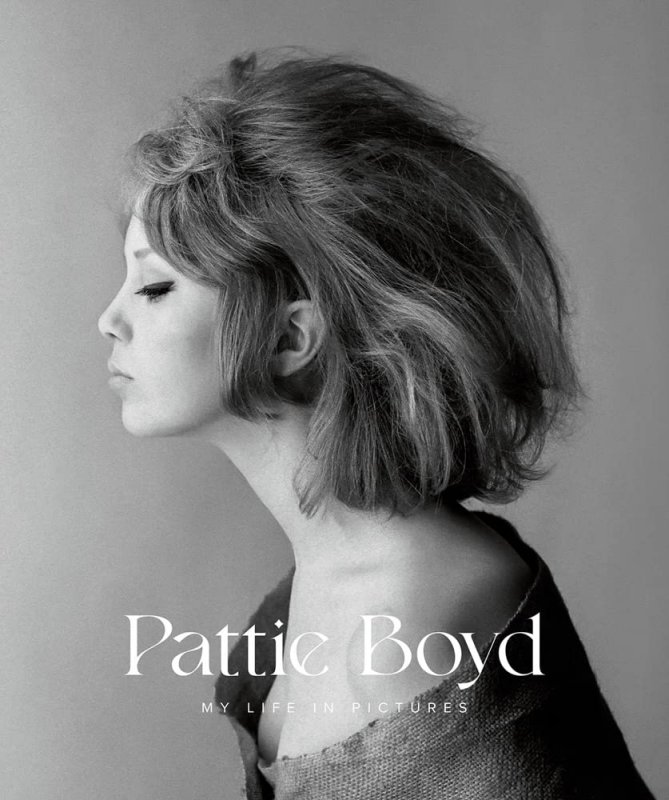 An exact time frame or location for the writing of “Love You To” was never mentioned in interview, nor was the inspiration for the lyrics. It has been supposed, however, that his early indoctrination into eastern beliefs can be deciphered here, such heard in the lines “a lifetime is so short, a new one can't be bought.” One can also assume that his new wife Pattie Boyd is thrown in the mix as well with lines like “I’ll make love to you, if you want me to.” An exact time frame or location for the writing of “Love You To” was never mentioned in interview, nor was the inspiration for the lyrics. It has been supposed, however, that his early indoctrination into eastern beliefs can be deciphered here, such heard in the lines “a lifetime is so short, a new one can't be bought.” One can also assume that his new wife Pattie Boyd is thrown in the mix as well with lines like “I’ll make love to you, if you want me to.”
Recording History
 “Most people don’t realize that making a record is much like shooting a film,” recalls engineer Geoff Emerick in his book "Here, There And Everywhere." He continued, “There are long periods of boredom and waiting around while technical details are attended to and parts worked out, interspersed with moments of creative spark. Naturally enough, my memories of the making of ‘Revolver’ consist largely of those moments. One example was the time that George Harrison brought in some local Indian musicians from the Asian Society to play on his song ‘Love You To.’” “Most people don’t realize that making a record is much like shooting a film,” recalls engineer Geoff Emerick in his book "Here, There And Everywhere." He continued, “There are long periods of boredom and waiting around while technical details are attended to and parts worked out, interspersed with moments of creative spark. Naturally enough, my memories of the making of ‘Revolver’ consist largely of those moments. One example was the time that George Harrison brought in some local Indian musicians from the Asian Society to play on his song ‘Love You To.’”
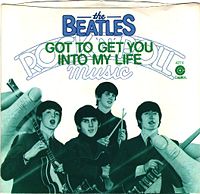 The day that Geoff Emerick was remembering was April 11th, 1966, which was only the fourth day of recording for what became the “Revolver” album and, astonishingly, the third anniversary of when the group's first British #1 single "From Me To You" was released there. George had written three songs for inclusion on the album but this was the first to be premiered in the studio, so therefore we can assume that he was more eager to get this recorded than the others. The group entered EMI Studio Two at 2:30 pm on this day, the first point of business being adding a guitar overdub to their previously recorded song “Got To Get You Into My Life.” By approximately 3:30 pm, work started on “Love You To.” The day that Geoff Emerick was remembering was April 11th, 1966, which was only the fourth day of recording for what became the “Revolver” album and, astonishingly, the third anniversary of when the group's first British #1 single "From Me To You" was released there. George had written three songs for inclusion on the album but this was the first to be premiered in the studio, so therefore we can assume that he was more eager to get this recorded than the others. The group entered EMI Studio Two at 2:30 pm on this day, the first point of business being adding a guitar overdub to their previously recorded song “Got To Get You Into My Life.” By approximately 3:30 pm, work started on “Love You To.”
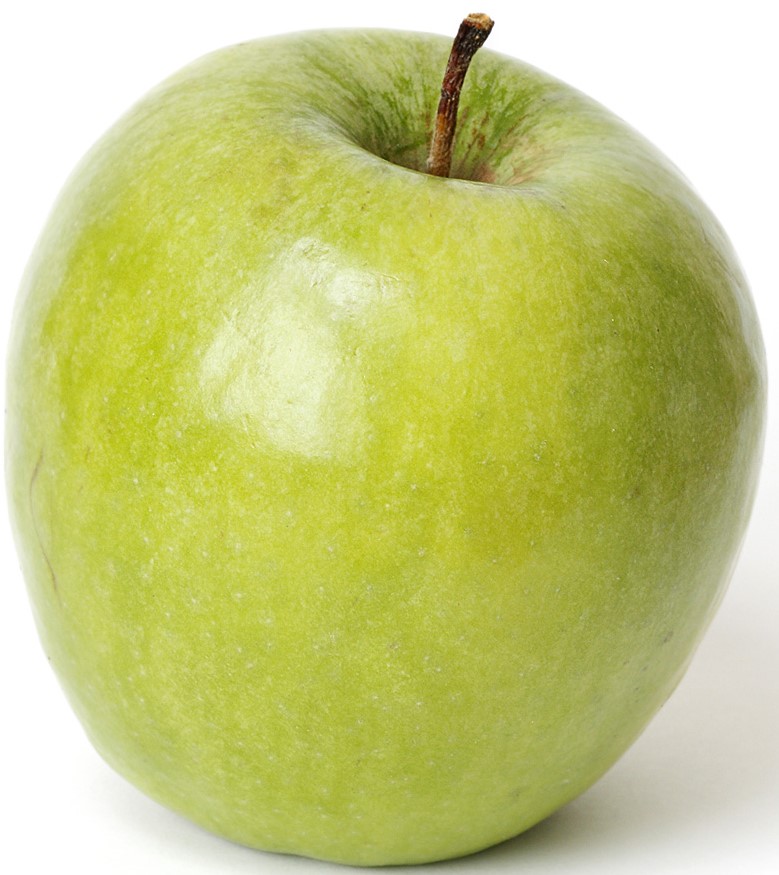 This is not to say that the song was called “Love You To” at this point. Geoff Emerick continued: “’Love You To’ – which I originally named ‘Granny Smith’ on the tape box, after my favorite kind of apple, only because George never had titles for his songs.” Throughout all of the sessions for the song, it continued to be referred to as “Granny Smith.” This is not to say that the song was called “Love You To” at this point. Geoff Emerick continued: “’Love You To’ – which I originally named ‘Granny Smith’ on the tape box, after my favorite kind of apple, only because George never had titles for his songs.” Throughout all of the sessions for the song, it continued to be referred to as “Granny Smith.”
 The following three-and-a-half hours were spent figuring out an arrangement for the song and then recording three takes of the rhythm track. It appears that the musicians from the Asian Society weren’t to arrive until the second session of the day began at about 8 pm. Therefore, some “technical details,” as mentioned in the above recollection of Geoff Emerick, could very well have been in regards to this later session. As for the “boredom” in waiting for arrangements to be “worked out,” this may very well be referring to the first session on this day. The following three-and-a-half hours were spent figuring out an arrangement for the song and then recording three takes of the rhythm track. It appears that the musicians from the Asian Society weren’t to arrive until the second session of the day began at about 8 pm. Therefore, some “technical details,” as mentioned in the above recollection of Geoff Emerick, could very well have been in regards to this later session. As for the “boredom” in waiting for arrangements to be “worked out,” this may very well be referring to the first session on this day.
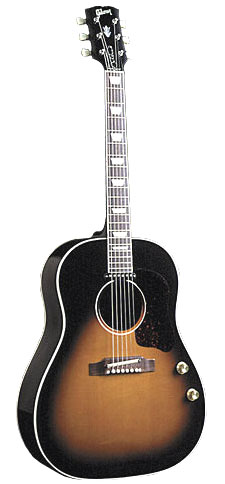 The first take consisted only of Harrison singing and playing acoustic guitar in the key of D minor with Paul supplying a bit of backing vocals, all of these elements being recorded onto track four of the four-track tape. As contained on 2022 Deluxe editions of "Revolver," "take one" begins with George (not Paul as liner notes claim) singing the sitar riff that he was purposely making room for during his acoustic guitar playing. "Take three" also contained George on vocal and acoustic guitar on track four, this performance being deemed adequate enough for overdubs, these comprising double-tracking his lead vocals and Paul's harmonies on track three, and George's first sitar for the song on track two. With this complete, they took an hour meal break (from 7 till 8 pm) until the second session began. The first take consisted only of Harrison singing and playing acoustic guitar in the key of D minor with Paul supplying a bit of backing vocals, all of these elements being recorded onto track four of the four-track tape. As contained on 2022 Deluxe editions of "Revolver," "take one" begins with George (not Paul as liner notes claim) singing the sitar riff that he was purposely making room for during his acoustic guitar playing. "Take three" also contained George on vocal and acoustic guitar on track four, this performance being deemed adequate enough for overdubs, these comprising double-tracking his lead vocals and Paul's harmonies on track three, and George's first sitar for the song on track two. With this complete, they took an hour meal break (from 7 till 8 pm) until the second session began.
 After dinner, a decision was made to disregard the work done so far and begin again, a taped rehearsal commencing that comprised George on sitar and humming the melody while Paul created the desired droning effect on tamboura. The final minute-and-a-half of this rehearsal was found at the end of this master reel of tape, the rest being recorded over with future takes of the song. As heard on the Deluxe editions of "Revolver," this rehearsal concludes with George asking Paul, 'What do you think?" "Ow!" is Paul's twice repeated answer, indicating the difficulty he was having playing the tamboura. After dinner, a decision was made to disregard the work done so far and begin again, a taped rehearsal commencing that comprised George on sitar and humming the melody while Paul created the desired droning effect on tamboura. The final minute-and-a-half of this rehearsal was found at the end of this master reel of tape, the rest being recorded over with future takes of the song. As heard on the Deluxe editions of "Revolver," this rehearsal concludes with George asking Paul, 'What do you think?" "Ow!" is Paul's twice repeated answer, indicating the difficulty he was having playing the tamboura.
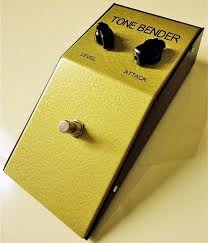 After the tape was spooled back to the end of "take three," three more takes of the song were recorded with the key lowered to C minor. "Take four" broke down but "take five" made it all the way through and received overdubs. This, however, was also abondoned while the following "take five" was deemed acceptable for overdubs, this being the version heard on the released album. First recorded onto track four was Harrison's lead vocals and acoustic guitar along with McCartney's harmonies, George overdubbing another vocal and acoustic guitar onto track three, George playing a "fuzz" electric guitar and some sitar parts (during different parts of the song) on track two, track one containing George's primary sitar part, McCartney on tamboura and also Anil Bhagwat on tabla. "I consciously tried to use sitar and tabla on the basic track," Harrison recalled. Regarding the "fuzz guitar" used by George on track two, this created an additional drone-like accompaniment throughout the song undoubtedly achieved by using "The Tone Bender," the device previously used on Paul's bass on the previous years' "Think For Yourself." After the tape was spooled back to the end of "take three," three more takes of the song were recorded with the key lowered to C minor. "Take four" broke down but "take five" made it all the way through and received overdubs. This, however, was also abondoned while the following "take five" was deemed acceptable for overdubs, this being the version heard on the released album. First recorded onto track four was Harrison's lead vocals and acoustic guitar along with McCartney's harmonies, George overdubbing another vocal and acoustic guitar onto track three, George playing a "fuzz" electric guitar and some sitar parts (during different parts of the song) on track two, track one containing George's primary sitar part, McCartney on tamboura and also Anil Bhagwat on tabla. "I consciously tried to use sitar and tabla on the basic track," Harrison recalled. Regarding the "fuzz guitar" used by George on track two, this created an additional drone-like accompaniment throughout the song undoubtedly achieved by using "The Tone Bender," the device previously used on Paul's bass on the previous years' "Think For Yourself."
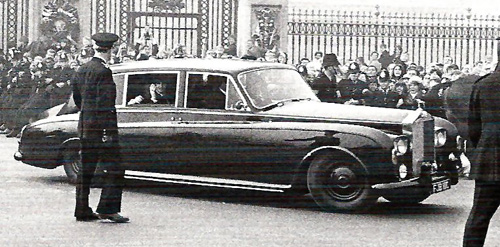 Anil Bhagwat was recruited from the Asian Music Circle to play the tabla on the song. “The session came out of the blue,” Anil Bhagwat remembers. “A chap called Angardi called me and asked if I was free that evening to work with George. I didn’t know who he meant – he didn’t say it was Harrison. It was only when a Rolls-Royce came to pick me up that I realized I’d be playing on a Beatles session. When I arrived at Abbey Road there were girls everywhere with Thermos flasks, cakes, sandwiches, waiting for The Beatles to come out. George told me what he wanted and I tuned the tabla with him. He suggested I play something in the Ravi Shankar style, 16-beats, though he agreed that I should improvise. Indian music is all improvisation. I was very lucky, they put my name on the record sleeve. I’m really proud of that; they were the greatest ever and my name is on the sleeve. It was one of the most exciting times of my life.” Anil Bhagwat was recruited from the Asian Music Circle to play the tabla on the song. “The session came out of the blue,” Anil Bhagwat remembers. “A chap called Angardi called me and asked if I was free that evening to work with George. I didn’t know who he meant – he didn’t say it was Harrison. It was only when a Rolls-Royce came to pick me up that I realized I’d be playing on a Beatles session. When I arrived at Abbey Road there were girls everywhere with Thermos flasks, cakes, sandwiches, waiting for The Beatles to come out. George told me what he wanted and I tuned the tabla with him. He suggested I play something in the Ravi Shankar style, 16-beats, though he agreed that I should improvise. Indian music is all improvisation. I was very lucky, they put my name on the record sleeve. I’m really proud of that; they were the greatest ever and my name is on the sleeve. It was one of the most exciting times of my life.”
 This is where the “technical details” came in. Geoff Emerick continues: “I had never miked Indian instruments before, but I was especially impressed by the huge sound coming from the tabla (percussion instruments somewhat similar to bongos). I decided to close-mic them, placing a sensitive ribbon mic just a few inches away, and then I heavily compressed the signal. No one had ever recorded tabla like that – they’d always been miked from a distance. My idea resulted in a fabulous sound, right in your face, and both Harrison and the Indian musicians commented afterward about it.” This is where the “technical details” came in. Geoff Emerick continues: “I had never miked Indian instruments before, but I was especially impressed by the huge sound coming from the tabla (percussion instruments somewhat similar to bongos). I decided to close-mic them, placing a sensitive ribbon mic just a few inches away, and then I heavily compressed the signal. No one had ever recorded tabla like that – they’d always been miked from a distance. My idea resulted in a fabulous sound, right in your face, and both Harrison and the Indian musicians commented afterward about it.”
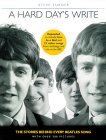 Since an invoice has been unearthed that stipulates a fee of 18 pounds had been paid to the Asian Music Circle from EMI for "tabla and sitar players," some have assumed that George was not the only sitar player on this track. "I can tell you here and now," Anil Bhagwat confirmed to author Steve Turner, "100 per cent it was George on sitar throughout. There were no other (Indian) musicians involved. It was just me and him." As for the tamboura heard on the song, the book contained in the 2022 "Revolver" deluxe editions stipulate Paul as playing the instrument, this also being evident by hearing McCartney's voice exclaiming "Ow!" during the rehearsal of the song contained in the Deluxe "Revolver" editions. Since an invoice has been unearthed that stipulates a fee of 18 pounds had been paid to the Asian Music Circle from EMI for "tabla and sitar players," some have assumed that George was not the only sitar player on this track. "I can tell you here and now," Anil Bhagwat confirmed to author Steve Turner, "100 per cent it was George on sitar throughout. There were no other (Indian) musicians involved. It was just me and him." As for the tamboura heard on the song, the book contained in the 2022 "Revolver" deluxe editions stipulate Paul as playing the instrument, this also being evident by hearing McCartney's voice exclaiming "Ow!" during the rehearsal of the song contained in the Deluxe "Revolver" editions.
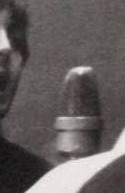 With all four tracks of the tape filled, a reduction mix was made to free up two tracks on the new tape for more overdubs, this reduction mix being called "take seven." One of the new open tracks, track three, contained a new harmony by Paul sung in strategic spots in all of the verses (such as during the vocal line "will fill you in with all the sins, you'll see"), this overdub later being deemed unnecessary and therefore faded out during the mixing stage. Onto the other newly vacated track was recorded a tambourine from Ringo and a further overdubbed "fuzz guitar" from Harrison playing a a low B-flat in the four sections of each refrain where the chord sequence moves briefly from C minor (such as during the lyric "love me while you can"). This simulated chord change in an otherwise "raga" style single-chord composition, George possibly using a volume pedal as heard in the previous year's "I Need You," is also interjected into the other single-chord “raga” song of the album, namely "Tomorrow Never Knows." With all four tracks of the tape filled, a reduction mix was made to free up two tracks on the new tape for more overdubs, this reduction mix being called "take seven." One of the new open tracks, track three, contained a new harmony by Paul sung in strategic spots in all of the verses (such as during the vocal line "will fill you in with all the sins, you'll see"), this overdub later being deemed unnecessary and therefore faded out during the mixing stage. Onto the other newly vacated track was recorded a tambourine from Ringo and a further overdubbed "fuzz guitar" from Harrison playing a a low B-flat in the four sections of each refrain where the chord sequence moves briefly from C minor (such as during the lyric "love me while you can"). This simulated chord change in an otherwise "raga" style single-chord composition, George possibly using a volume pedal as heard in the previous year's "I Need You," is also interjected into the other single-chord “raga” song of the album, namely "Tomorrow Never Knows."
 With all four tracks of the new tape filled, the session ended at 12:45 the following morning. The EMI staff, consisting of producer George Martin, Geoff Emerick and 2nd engineer Phil McDonald, spent the next fifteen minutes of the early morning creating the first mono mix of the song, which was dutifully taken away by George Harrison for reference. This mix, which is also included in the 2022 Deluxe editions of "Revolver," displays McCartney's additional harmonies that were faded down in the finished mix, a non-faded ending that shows the song speeding up even more than what we're used to hearing in the released mixes, and the prominent appearance of George's first "fuzz guitar" overdub. With all four tracks of the new tape filled, the session ended at 12:45 the following morning. The EMI staff, consisting of producer George Martin, Geoff Emerick and 2nd engineer Phil McDonald, spent the next fifteen minutes of the early morning creating the first mono mix of the song, which was dutifully taken away by George Harrison for reference. This mix, which is also included in the 2022 Deluxe editions of "Revolver," displays McCartney's additional harmonies that were faded down in the finished mix, a non-faded ending that shows the song speeding up even more than what we're used to hearing in the released mixes, and the prominent appearance of George's first "fuzz guitar" overdub.
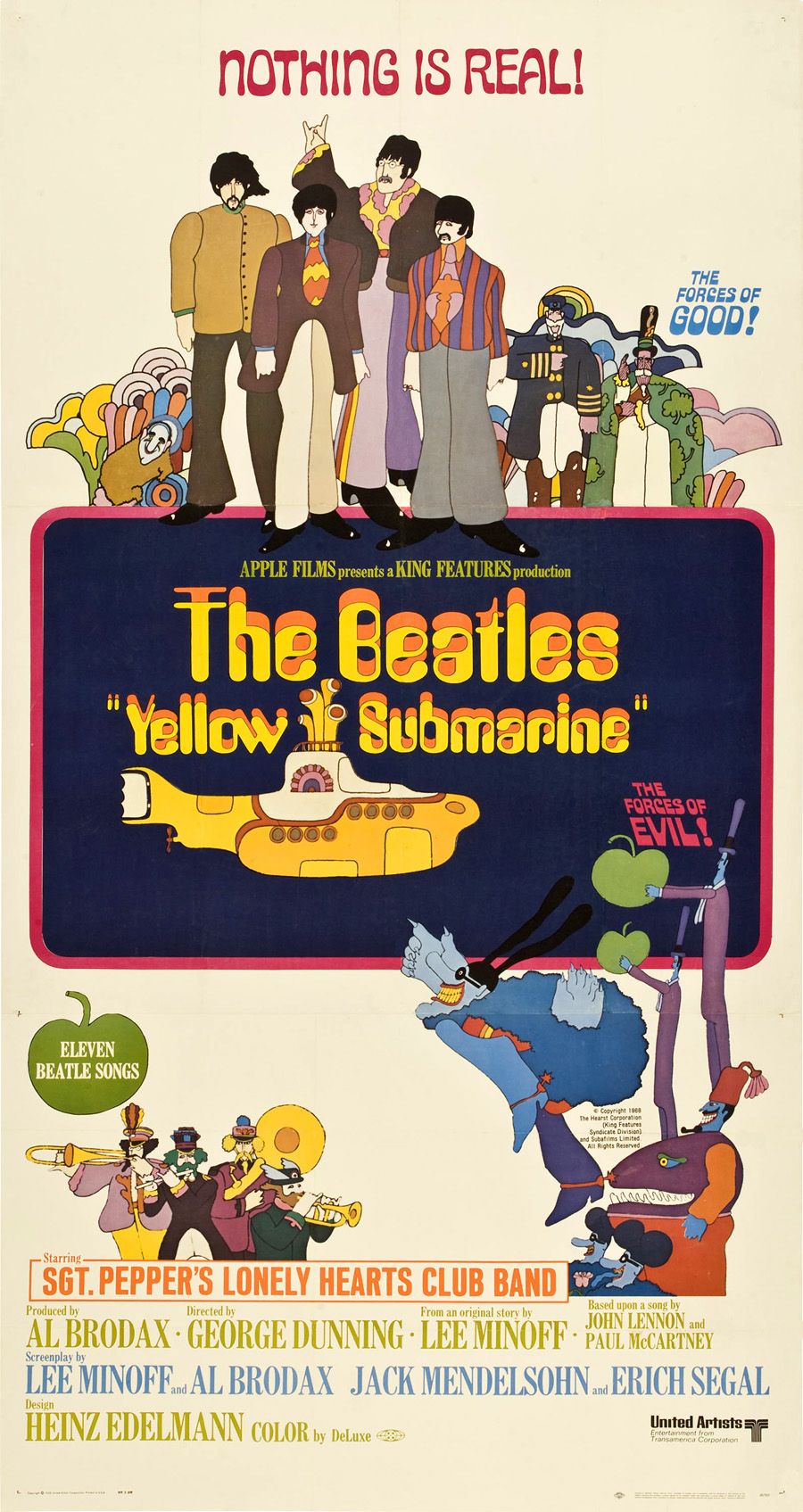 Two days later, on April 13th, 1966, the group reconvened at EMI Studios (this time in Studio Three) between 2:30 to 6:30 pm to complete the song. A decision was made to subtly introduce the song with a sitar introduction from George, this being performed as an edit piece that was, two years later, included in the "Yellow Submarine" movie to introduce the mystical character of George Harrison. Two days later, on April 13th, 1966, the group reconvened at EMI Studios (this time in Studio Three) between 2:30 to 6:30 pm to complete the song. A decision was made to subtly introduce the song with a sitar introduction from George, this being performed as an edit piece that was, two years later, included in the "Yellow Submarine" movie to introduce the mystical character of George Harrison.
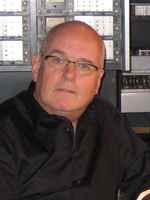 This edit piece completed the recording for the song, the next job being the creation of the mono mix that would be used for the final product. Three mono mixes were made in the control room of EMI Studio Three on this day by George Martin, Geoff Emerick and 2nd engineer Richard Lush. The purpose of three mixes was in order to edit them together to create the final mono mix. Two of the mixes had ADT (“Artificial Double Tracking”) applied to them and one didn’t. It appears that ADT was applied to the lead sitar performance throughout the track but it isn’t detected in the instrumental section of the song – therefore, a separate mix without ADT would be necessary for this section. The finished mix faded down the extended instrumental ending to clock the song in at 3:08. This edit piece completed the recording for the song, the next job being the creation of the mono mix that would be used for the final product. Three mono mixes were made in the control room of EMI Studio Three on this day by George Martin, Geoff Emerick and 2nd engineer Richard Lush. The purpose of three mixes was in order to edit them together to create the final mono mix. Two of the mixes had ADT (“Artificial Double Tracking”) applied to them and one didn’t. It appears that ADT was applied to the lead sitar performance throughout the track but it isn’t detected in the instrumental section of the song – therefore, a separate mix without ADT would be necessary for this section. The finished mix faded down the extended instrumental ending to clock the song in at 3:08.
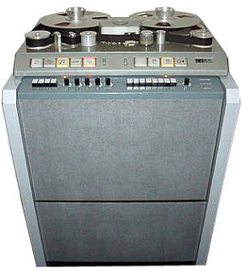 This mono mix was copied three times over on May 16th, 1966 in the control room of EMI Studio Two (by George Martin, Geoff Emerick and Phil McDonald) for the sole purpose of assembling a master reel of some of the best complete mixes for their soon-to-be-released "Revolver" album. Since this wasn’t done during previous projects, it indicates their pride at what they were accomplishing on this album. This mono mix was copied three times over on May 16th, 1966 in the control room of EMI Studio Two (by George Martin, Geoff Emerick and Phil McDonald) for the sole purpose of assembling a master reel of some of the best complete mixes for their soon-to-be-released "Revolver" album. Since this wasn’t done during previous projects, it indicates their pride at what they were accomplishing on this album.
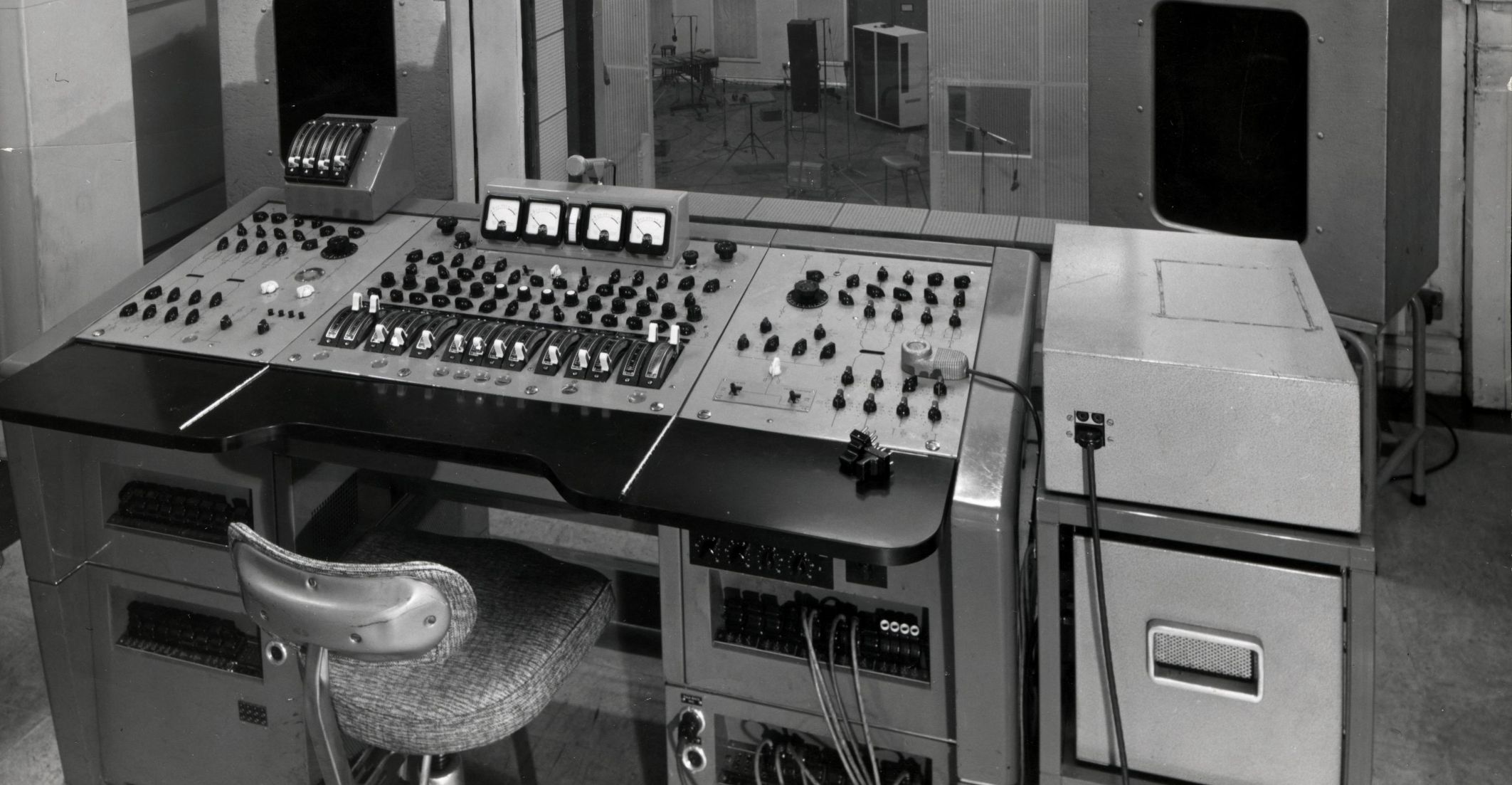 It wasn’t until June 21st, 1966, that the stereo mix of George's song (still titled “Granny Smith” even at this point) was created. This was done in the control room of EMI Studio Three by the usual team of George Martin, Geoff Emerick and Phil McDonald with the same procedure as had been done with the mono mix, namely that three stereo mixes were first made (two with ADT, one without) and then were edited together. The stereo mix has every element mixed near the center while they decide to fade the song eight seconds earlier than the mono mix, making a tidy three minute song. It wasn’t until June 21st, 1966, that the stereo mix of George's song (still titled “Granny Smith” even at this point) was created. This was done in the control room of EMI Studio Three by the usual team of George Martin, Geoff Emerick and Phil McDonald with the same procedure as had been done with the mono mix, namely that three stereo mixes were first made (two with ADT, one without) and then were edited together. The stereo mix has every element mixed near the center while they decide to fade the song eight seconds earlier than the mono mix, making a tidy three minute song.
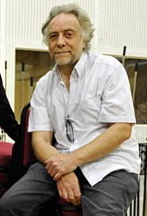 Sometime in 1998 or 1999, a further stereo mix was made of "Love You To" for its inclusion on the album “Yellow Submarine Songtrack” released on September 13th, 1999. An engineering team, which included Peter Cobbin, Paul Hicks, Mirek Stiles and Allan Rouse, created this mix in EMI Studios (now “Abbey Road Studios”) accessing the original master tapes to create a vibrant remastered stereo mix for this release. The separation is more apparent with the Indian instruments appearing predominantly in the left channel and the fuzz guitar more discernable in the right channel, while the length of the fadeout is even a little shorter than three minutes this time around. Sadly, this excellent mix has not been used on the remastered releases of 2009 due to wanting to keep to the original George Martin 1966 mixes. Sometime in 1998 or 1999, a further stereo mix was made of "Love You To" for its inclusion on the album “Yellow Submarine Songtrack” released on September 13th, 1999. An engineering team, which included Peter Cobbin, Paul Hicks, Mirek Stiles and Allan Rouse, created this mix in EMI Studios (now “Abbey Road Studios”) accessing the original master tapes to create a vibrant remastered stereo mix for this release. The separation is more apparent with the Indian instruments appearing predominantly in the left channel and the fuzz guitar more discernable in the right channel, while the length of the fadeout is even a little shorter than three minutes this time around. Sadly, this excellent mix has not been used on the remastered releases of 2009 due to wanting to keep to the original George Martin 1966 mixes.
 Sometime in 2022, George Martin's son Giles Martin, along with engineer Sam Okell, returned to the "Love You To" tapes to create a newer stereo mix for "Revolver" that would seperate condensed elements into a vibrant new listening experience. While they were at it, they also created mixes for the acoustic guitar-based "take one," the sitar/tamboura reherarsal, and the first mono mix from April 11th, 1966, all of these being included in the Deluxe editions of "Revolver" released that year. Sometime in 2022, George Martin's son Giles Martin, along with engineer Sam Okell, returned to the "Love You To" tapes to create a newer stereo mix for "Revolver" that would seperate condensed elements into a vibrant new listening experience. While they were at it, they also created mixes for the acoustic guitar-based "take one," the sitar/tamboura reherarsal, and the first mono mix from April 11th, 1966, all of these being included in the Deluxe editions of "Revolver" released that year.
Song Structure and Style
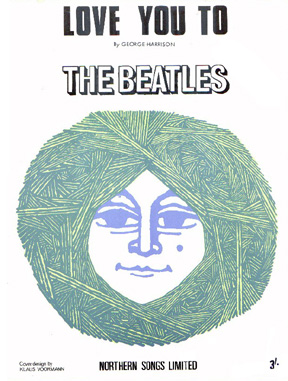 While the structure of classical Indian compositions make great use of improvisation and thereby differ dramatically from Western pop music of the '60s, this East-meets-West effort combines a format that was much more familiar with their audience with an indoctrination of sorts to this style of music for their fans to grab hold of as they had. In the process, a more common ‘verse/ refrain/ verse/ refrain/ verse (solo)/ refrain/ verse/ refrain’ structure is presented (or ababcbab). Eastern improvisation appears in the introduction, the solo and the conclusion of the track. While the structure of classical Indian compositions make great use of improvisation and thereby differ dramatically from Western pop music of the '60s, this East-meets-West effort combines a format that was much more familiar with their audience with an indoctrination of sorts to this style of music for their fans to grab hold of as they had. In the process, a more common ‘verse/ refrain/ verse/ refrain/ verse (solo)/ refrain/ verse/ refrain’ structure is presented (or ababcbab). Eastern improvisation appears in the introduction, the solo and the conclusion of the track.
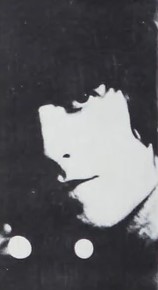 We first start out with a free-form-style introduction to showcase the degree of mastery that George had of the sitar by that time. No meter or number of measures can or were intended to be set – the intention being to create an air of surprise and anticipation, and in the process, set the exotic mood. After two glissandos, he begins his impressive "noodling around" and, with yet another glissando thrown in, the tempo is set with the first appearance of the main “riff.” We first start out with a free-form-style introduction to showcase the degree of mastery that George had of the sitar by that time. No meter or number of measures can or were intended to be set – the intention being to create an air of surprise and anticipation, and in the process, set the exotic mood. After two glissandos, he begins his impressive "noodling around" and, with yet another glissando thrown in, the tempo is set with the first appearance of the main “riff.”
 The first verse, which introduces the entire spectrum of musical instruments used in the song, jolts us right into the heart of India with distinct images of the marketplace, belly-dancers and snake charmers. (If this city boy is being too stereotypical, I apologize. :-) ) Two measures of vamping introduce what turns out to be a ten-measure verse, the following eight measures being the usual standard in popular music at the time. George’s double-tracked vocals kick in by the third measure, his melody line not straying from a simple five-note range throughout the entire song. He reaches his highest point in the ninth measure as the instrumentation stops for a brief a cappella ending to the verse on the word “me.” This high note is held by Paul while George cascades down the five-note scale to conclude the verse. The first verse, which introduces the entire spectrum of musical instruments used in the song, jolts us right into the heart of India with distinct images of the marketplace, belly-dancers and snake charmers. (If this city boy is being too stereotypical, I apologize. :-) ) Two measures of vamping introduce what turns out to be a ten-measure verse, the following eight measures being the usual standard in popular music at the time. George’s double-tracked vocals kick in by the third measure, his melody line not straying from a simple five-note range throughout the entire song. He reaches his highest point in the ninth measure as the instrumentation stops for a brief a cappella ending to the verse on the word “me.” This high note is held by Paul while George cascades down the five-note scale to conclude the verse.
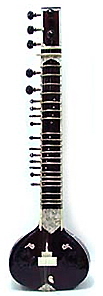 The refrain next appears which consists of six measures, although it is anything but usual in typical Beatles compositions up to that point. The sitar “riff” is repeated to bring the instrumentation back in, but the measure that comprises this riff is only three beats long instead of four as we’ve heard so far in the song. We then go back into four beats per measure when the band reappears, the second measure of the refrain being a simple vamp to get the ball rolling again. The third measure introduces George’s melody line with the lyrics “love me while you can,” this partially mimicking the sitar riff of the song, which is played underneath his vocals. The full sitar riff appears directly afterward, the pattern continuing with George’s next line “before I’m a dead old man.” The refrain next appears which consists of six measures, although it is anything but usual in typical Beatles compositions up to that point. The sitar “riff” is repeated to bring the instrumentation back in, but the measure that comprises this riff is only three beats long instead of four as we’ve heard so far in the song. We then go back into four beats per measure when the band reappears, the second measure of the refrain being a simple vamp to get the ball rolling again. The third measure introduces George’s melody line with the lyrics “love me while you can,” this partially mimicking the sitar riff of the song, which is played underneath his vocals. The full sitar riff appears directly afterward, the pattern continuing with George’s next line “before I’m a dead old man.”
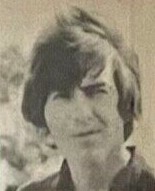 The sixth measure, which contains the refrain's final sitar riff, is also reduced to three beats to make the riff fit squarely into the setting. Interestingly, the jarring distorted sound mentioned in the preceding subheading from the “fuzz guitar” is heard in the first half of measures three through six, the purpose being to simulate a chord change. The sixth measure, which contains the refrain's final sitar riff, is also reduced to three beats to make the riff fit squarely into the setting. Interestingly, the jarring distorted sound mentioned in the preceding subheading from the “fuzz guitar” is heard in the first half of measures three through six, the purpose being to simulate a chord change.
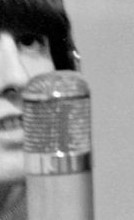 The listener is then positioned back to four-beats-per-measure for the next verse and refrain which, for all intents and purposes, are identical in structure to the ones preceding it. This is followed by another ten-measure verse which this time does not end with two measures of a cappella singing from George and Paul. This verse is instead used for improvisational vamping from George on the sitar which, at times, meanders unpredictably, causing the listener to not be able to predict when the next section will appear. All part of the plan, I imagine. The listener is then positioned back to four-beats-per-measure for the next verse and refrain which, for all intents and purposes, are identical in structure to the ones preceding it. This is followed by another ten-measure verse which this time does not end with two measures of a cappella singing from George and Paul. This verse is instead used for improvisational vamping from George on the sitar which, at times, meanders unpredictably, causing the listener to not be able to predict when the next section will appear. All part of the plan, I imagine.
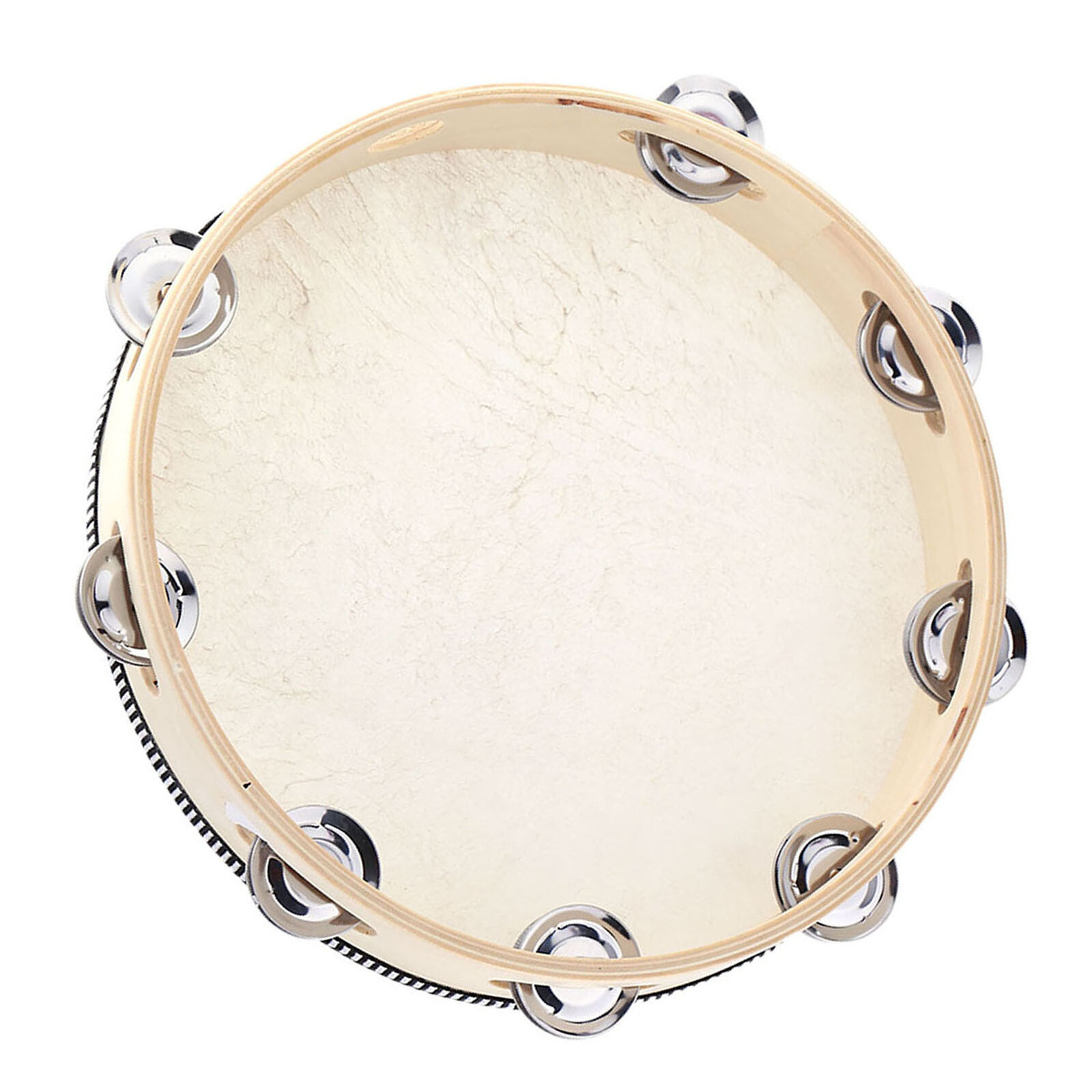 Unpredictably, seemingly out of nowhere (unless you happened to be counting out exactly ten measures), the next refrain jumps into the picture. Since there is no a cappella ending to the preceding instrumental verse, there is no need for the three-measure “riff” to get things going, thereby reducing this refrain to only four measures. The fourth measure, however, is three-beats long in order to accommodate the “riff” that appears therein, ending this shortened refrain as all the others. A final verse/refrain set is then heard which is identical in structure, the refrain propelling us into a rushed tempo as a setting for sitar improvisation to finish off the song. The tempo even increases slightly more as the track fades out, which is more apparent in the mono mix because of its extended length. Unpredictably, seemingly out of nowhere (unless you happened to be counting out exactly ten measures), the next refrain jumps into the picture. Since there is no a cappella ending to the preceding instrumental verse, there is no need for the three-measure “riff” to get things going, thereby reducing this refrain to only four measures. The fourth measure, however, is three-beats long in order to accommodate the “riff” that appears therein, ending this shortened refrain as all the others. A final verse/refrain set is then heard which is identical in structure, the refrain propelling us into a rushed tempo as a setting for sitar improvisation to finish off the song. The tempo even increases slightly more as the track fades out, which is more apparent in the mono mix because of its extended length.
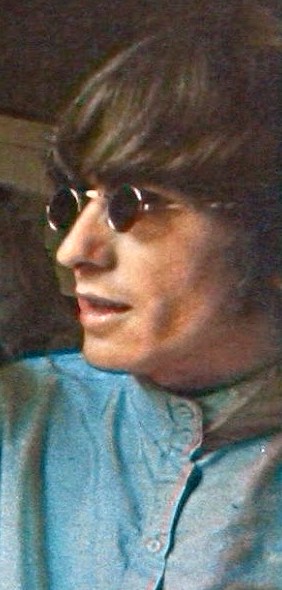 This is George’s “baby” all the way, his pride showing through all three minutes of its duration. His hypnotic and banal vocals could never have been more approporiate than in this context, the double-tracking helping to play the part as well. George's sitar playing is very impressive, especially coming from a young Englishman in his early '20s who had only been introduced to the instrument about a year before. His acoustic and electric guitar work, while not too distinguishable on the track, show that he was quite involved in its recording. This is George’s “baby” all the way, his pride showing through all three minutes of its duration. His hypnotic and banal vocals could never have been more approporiate than in this context, the double-tracking helping to play the part as well. George's sitar playing is very impressive, especially coming from a young Englishman in his early '20s who had only been introduced to the instrument about a year before. His acoustic and electric guitar work, while not too distinguishable on the track, show that he was quite involved in its recording.
 Even though John watched from a distance as this track was being produced, Paul had once again shown himself eager to participate with George in bringing his new vision to the world. He did well in holding out the high notes at the end of each verse, as well as contributing nicely on tamboura, which was a simple but new musical instrument for him to tackle. Ringo's overdubbed tambourine was also performed suitably for the recording. Kudos also to Anil Bhagwat on tabla for his outstanding efforts in helping to introduce these beautiful Indian sounds to the rest of the world. Even though John watched from a distance as this track was being produced, Paul had once again shown himself eager to participate with George in bringing his new vision to the world. He did well in holding out the high notes at the end of each verse, as well as contributing nicely on tamboura, which was a simple but new musical instrument for him to tackle. Ringo's overdubbed tambourine was also performed suitably for the recording. Kudos also to Anil Bhagwat on tabla for his outstanding efforts in helping to introduce these beautiful Indian sounds to the rest of the world.
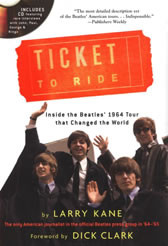 Harrison’s lyric message may touch slightly on Eastern beliefs, but primarily is perceived as depicting the futility of a fast moving existence. “Each day just goes so fast,” he bemoans, “I turn around, it’s passed.” His next line, “You don’t get time to hang a sign on me,” may remind us of a 1965 interview with Larry Kane as included in his book “Ticket To Ride.” Speaking about their first US visit, George stated: “When we first came over here they didn’t know us all that well. People, like, hang tags on you. Ringo was the cuddly one or something. Paul was the lovely one, and I was the quiet one, and John was the shouting one. I’ve been the same all along. I talk when I feel like it. I shut up when I don’t feel like talking.” Harrison’s lyric message may touch slightly on Eastern beliefs, but primarily is perceived as depicting the futility of a fast moving existence. “Each day just goes so fast,” he bemoans, “I turn around, it’s passed.” His next line, “You don’t get time to hang a sign on me,” may remind us of a 1965 interview with Larry Kane as included in his book “Ticket To Ride.” Speaking about their first US visit, George stated: “When we first came over here they didn’t know us all that well. People, like, hang tags on you. Ringo was the cuddly one or something. Paul was the lovely one, and I was the quiet one, and John was the shouting one. I’ve been the same all along. I talk when I feel like it. I shut up when I don’t feel like talking.”
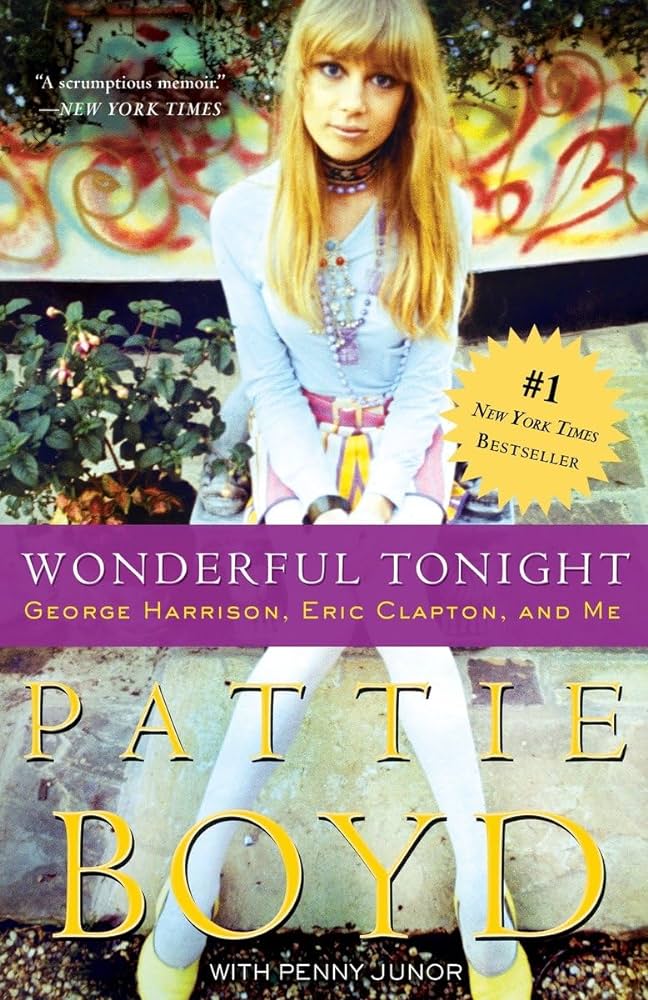 Apparently directing his attention to new wife Pattie Boyd, George continues: “Love me while you can, before I’m a dead old man.” This theme about love making continues in the remaining refrains of the song, namely: “Make love all day long” and “I’ll make love to you, if you want me to.” This second phrase influenced the opinion of many that the title of the song was actually a typo, “love you to” being a juxtaposition of “love to you.” This seems not to be the case since the label and jacket both contain the same wording for the title of this track, the reason for the word choice never being explained by its writer. Apparently directing his attention to new wife Pattie Boyd, George continues: “Love me while you can, before I’m a dead old man.” This theme about love making continues in the remaining refrains of the song, namely: “Make love all day long” and “I’ll make love to you, if you want me to.” This second phrase influenced the opinion of many that the title of the song was actually a typo, “love you to” being a juxtaposition of “love to you.” This seems not to be the case since the label and jacket both contain the same wording for the title of this track, the reason for the word choice never being explained by its writer.
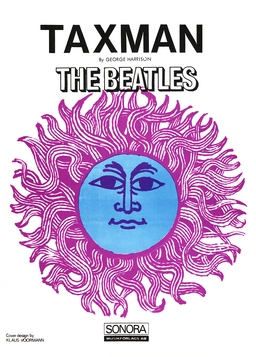 Also never explained is the identity of the people who are “standing ‘round who’ll screw you in the ground.” The mention made next of “their sins” may lead one to possibly believe that the “taxman” may be the culprit, the time proximity between this song and that previous “Revolver” track's composition being very close. Also never explained is the identity of the people who are “standing ‘round who’ll screw you in the ground.” The mention made next of “their sins” may lead one to possibly believe that the “taxman” may be the culprit, the time proximity between this song and that previous “Revolver” track's composition being very close.
One final curiosity concerns George and Pattie's love life. While one can easily imagine newlyweds making love “all day long,” should we really believe that they would “make love singing songs”?
American Releases
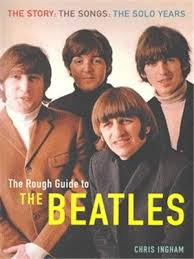 August 8th, 1966 was the release date for the Capitol version of “Revolver” in the US. The omission of three John Lennon penned tracks from the British album meant that two out of the first three tracks on the American version of the album were written by George Harrison, which was an unprecedented achievement. The diverse jump from the fully orchestrated “Eleanor Rigby” to the Eastern cultural sounds of “Love You To” was also a stunning display for US record buyers. As Chris Ingham states in “The Rough Guide To The Beatles,” their mainstream audience must have been scratching their heads exclaiming, “What’s Going On?” This American version of the "Revolver" album got a compact disc release on January 21st, 2014, with both the mono and stereo versions contained on a single CD. August 8th, 1966 was the release date for the Capitol version of “Revolver” in the US. The omission of three John Lennon penned tracks from the British album meant that two out of the first three tracks on the American version of the album were written by George Harrison, which was an unprecedented achievement. The diverse jump from the fully orchestrated “Eleanor Rigby” to the Eastern cultural sounds of “Love You To” was also a stunning display for US record buyers. As Chris Ingham states in “The Rough Guide To The Beatles,” their mainstream audience must have been scratching their heads exclaiming, “What’s Going On?” This American version of the "Revolver" album got a compact disc release on January 21st, 2014, with both the mono and stereo versions contained on a single CD.
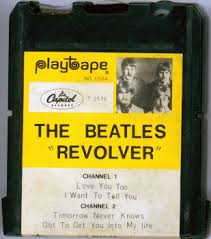 Sometime in 1967, Capitol released Beatles music on a brand new but short-lived format called "Playtapes." These tape cartridges did not have the capability to include entire albums, so two four-song versions of "Revolver" were released in this portable format, "Love You To" being on one of them. These "Playtapes" are highly collectable today. Sometime in 1967, Capitol released Beatles music on a brand new but short-lived format called "Playtapes." These tape cartridges did not have the capability to include entire albums, so two four-song versions of "Revolver" were released in this portable format, "Love You To" being on one of them. These "Playtapes" are highly collectable today.
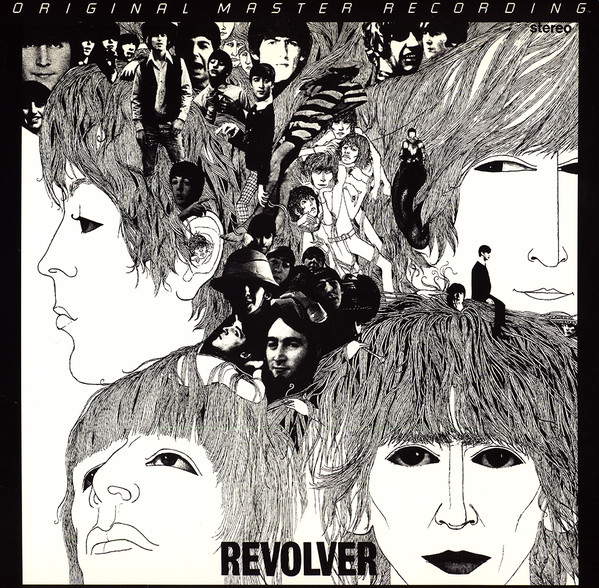 The first time the original British "Revolver” album was made available in America was the "Original Master Recording" vinyl edition released through Mobile Fidelity Sound Lab sometime in 1985. This album included "Love You To" and was prepared utilizing half-speed mastering technology from the original master tape on loan from EMI. This version of the album was only available for a short time and is quite collectible today. The first time the original British "Revolver” album was made available in America was the "Original Master Recording" vinyl edition released through Mobile Fidelity Sound Lab sometime in 1985. This album included "Love You To" and was prepared utilizing half-speed mastering technology from the original master tape on loan from EMI. This version of the album was only available for a short time and is quite collectible today.
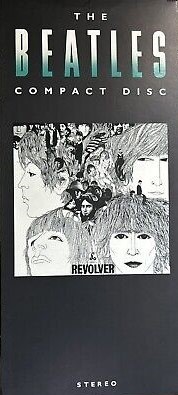 The full fourteen-track British “Revolver” album then got its US release on compact disc for the first time on April 30th, 1987, a vinyl edition being released on July 21st, 1987. This album was then remastered and re-released on CD on September 9th, 2009, a remastered vinyl edition coming out on November 13th, 2012. A remarkable newly mixed edition of "Revolver" created by Giles Martin was released on vinyl and CD on October 28th, 2022. The full fourteen-track British “Revolver” album then got its US release on compact disc for the first time on April 30th, 1987, a vinyl edition being released on July 21st, 1987. This album was then remastered and re-released on CD on September 9th, 2009, a remastered vinyl edition coming out on November 13th, 2012. A remarkable newly mixed edition of "Revolver" created by Giles Martin was released on vinyl and CD on October 28th, 2022.
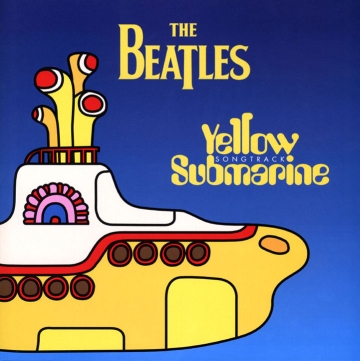 On September 13th, 1999, the song got another release on the “Yellow Submarine Songtrack” album which came out in conjunction with the re-released film on video and DVD. This vibrantly remastered version of "Love You To" appeared on this compilation because of the brief appearance of the introduction of the song in the movie. On September 13th, 1999, the song got another release on the “Yellow Submarine Songtrack” album which came out in conjunction with the re-released film on video and DVD. This vibrantly remastered version of "Love You To" appeared on this compilation because of the brief appearance of the introduction of the song in the movie.
 September 9th, 2009 also marked the date that the original 1966 mono mix appeared on compact disc for the first time, this being included in the box set “The Beatles In Mono.” This remastered version includes the additional eight seconds as originally heard on mono copies of the vinyl album. The vinyl edition of this box set was first released on September 9th, 2014. September 9th, 2009 also marked the date that the original 1966 mono mix appeared on compact disc for the first time, this being included in the box set “The Beatles In Mono.” This remastered version includes the additional eight seconds as originally heard on mono copies of the vinyl album. The vinyl edition of this box set was first released on September 9th, 2014.
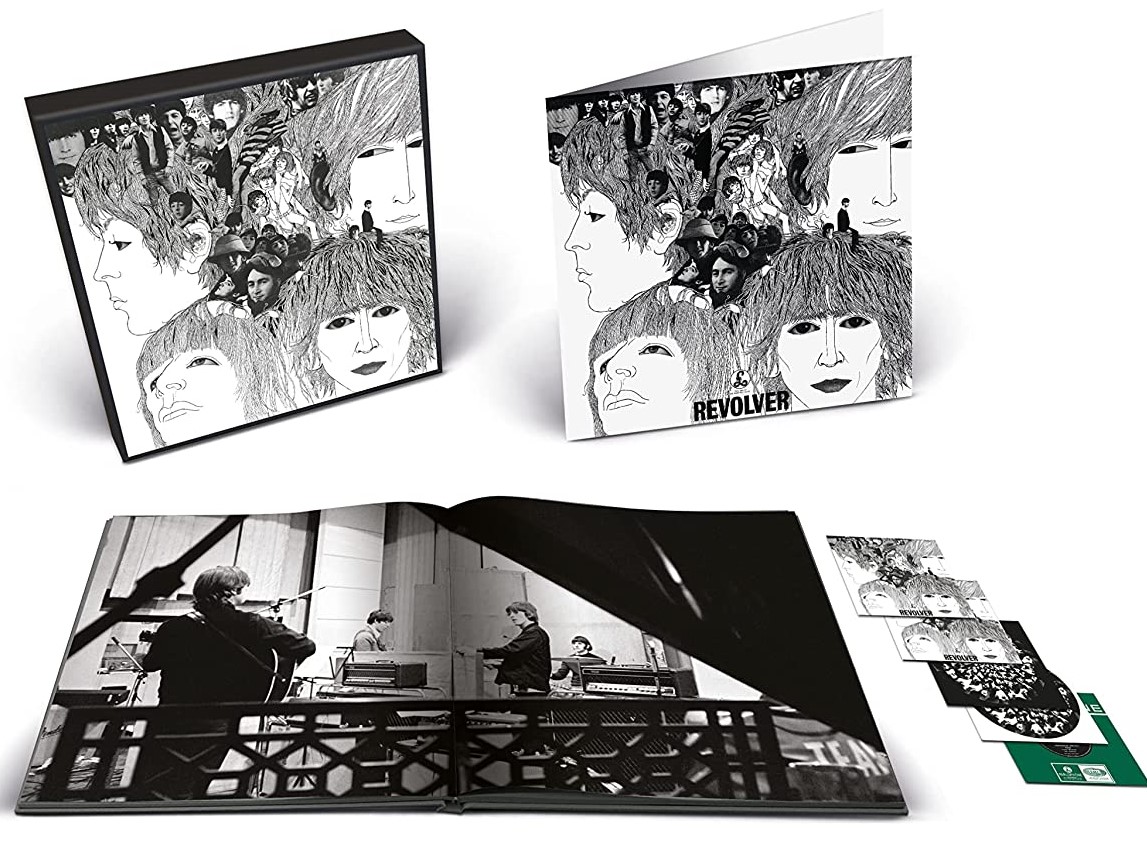 On October 28th, 2022, various new editions of the 14 track “Revolver” album were released that feature the amazing new stereo mix by Giles Martin. The “Special Edition Deluxe 2CD Set” features “Love You To” in its new stereo mix as well as “take seven” from the 1966 session tapes. The “Deluxe Edition,” which was made available as a 5 CD box set and a 4LP / 1 EP box set, includes these versions as well as the instrumental "take one," an unnumbered sitar/tamboura rehearsal, and the original mono master from 1966. The 2022 Giles Martin stereo mix of the album was also made available for the first time as a vinyl picture disc for a limited time. On October 28th, 2022, various new editions of the 14 track “Revolver” album were released that feature the amazing new stereo mix by Giles Martin. The “Special Edition Deluxe 2CD Set” features “Love You To” in its new stereo mix as well as “take seven” from the 1966 session tapes. The “Deluxe Edition,” which was made available as a 5 CD box set and a 4LP / 1 EP box set, includes these versions as well as the instrumental "take one," an unnumbered sitar/tamboura rehearsal, and the original mono master from 1966. The 2022 Giles Martin stereo mix of the album was also made available for the first time as a vinyl picture disc for a limited time.
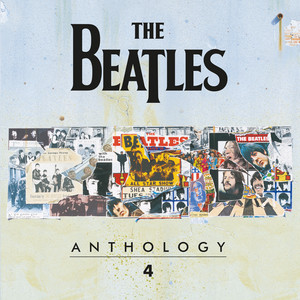 On November 21st, 2025, "Anthology 4" was released on both CD and vinyl, this also being made available within the "Anthology Collection" box set on CD and on vinyl. "Take seven" of "Love You To" as recorded at EMI Studio Two on April 11th, 1966 and EMI Studio Three on April 13th, 1966, as detailed above, was again featured on this release as it was on certain editions of "Revolver" mentioned above. On November 21st, 2025, "Anthology 4" was released on both CD and vinyl, this also being made available within the "Anthology Collection" box set on CD and on vinyl. "Take seven" of "Love You To" as recorded at EMI Studio Two on April 11th, 1966 and EMI Studio Three on April 13th, 1966, as detailed above, was again featured on this release as it was on certain editions of "Revolver" mentioned above.
Live Performances
An early positioning on side one of “Revolver,” coupled with the exotic instrumentation and Eastern structure, show this song as intended only as a showpiece of the album with no aspirations for their stage act. And although George did resurrect many Beatles “Harrisongs” for his Japan concerts in December of 1991, this unfortunately was not one of them.
Conclusion
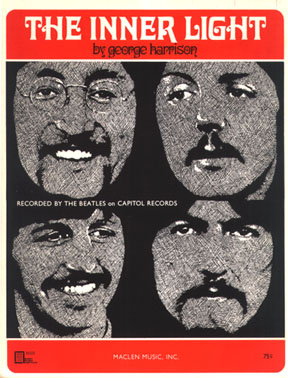 George’s forays into strict Eastern musicianship within The Beatles cannon amounted to three songs, this being his brave first move. While the lyrical content of this first attempt doesn’t venture far beyond Western thought, the following two indulgences show him playing the role of sage, attempting to offer his newly acquired insights of consciousness to the public en masse. His philosophical musings from 1967’s “Within You Without You” and his Tao Te Ching recitation in 1968’s “The Inner Light” do much better in depicting George Harrison as “The Mystic Beatle” – as pictured on a hilltop with the wind blowing through his hair during his introductory appearance in the movie “Yellow Submarine.” George’s forays into strict Eastern musicianship within The Beatles cannon amounted to three songs, this being his brave first move. While the lyrical content of this first attempt doesn’t venture far beyond Western thought, the following two indulgences show him playing the role of sage, attempting to offer his newly acquired insights of consciousness to the public en masse. His philosophical musings from 1967’s “Within You Without You” and his Tao Te Ching recitation in 1968’s “The Inner Light” do much better in depicting George Harrison as “The Mystic Beatle” – as pictured on a hilltop with the wind blowing through his hair during his introductory appearance in the movie “Yellow Submarine.”
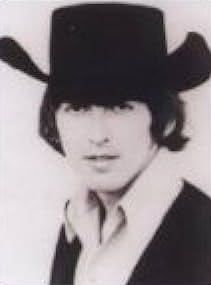 At any rate, this new transcendental role did a lot for George’s credibility within the band. He may not have proven himself the tunesmith that John and Paul had up to this point, but everyone knew that it was George that took the music of The Beatles down this Eastern path and, as a result, made it “cool” to reach for a higher awareness. At any rate, this new transcendental role did a lot for George’s credibility within the band. He may not have proven himself the tunesmith that John and Paul had up to this point, but everyone knew that it was George that took the music of The Beatles down this Eastern path and, as a result, made it “cool” to reach for a higher awareness.
Song Summary
“Love You To”
Written by: George Harrison
-
Song Written: March - April, 1966
-
Song Recorded: April 11 & 13, 1966
-
First US Release Date: August 8, 1966
-
First US Album Release: Capitol #ST-2576 “Revolver”
-
US Single Release: n/a
-
Highest Chart Position: n/a
-
British Album Release: Parlophone #PCS 7009 “Revolver”
-
Length: 3:08 (mono) 3:00 (stereo)
-
Key: C minor
-
Producer: George Martin
-
Engineers: Geoff Emerick, Phil McDonald, Richard Lush
Instrumentation (most likely):
-
George Harrison – Lead Vocals, Sitar, Rhythm Guitars (1962 Gibson J-160E, 1961 Sonic Blue Fender Stratocaster)
-
Paul McCartney - Harmony Vocals, Tamboura
-
Ringo Starr – tambourine
-
Anil Bhagwat - Tabla
Written and compiled by Dave Rybaczewski
|
IF YOU WOULD LIKE TO MAKE A DONATION TO KEEP THIS WEBSITE UP AND RUNNING, PLEASE CLICK BELOW!
|